Accounting for nearly 20% of U.S. GDP, health care is a massive and complex industry. With the arrival of the novel coronavirus and accompanying social distancing measures, an entirely new layer of complexity has thrust healthcare technology solutions—and particularly virtual care platforms—into the spotlight. In a matter of weeks, telehealth went from a nice-to-have for some healthcare institutions to a must-have for nearly every medical practice.
But along with the surge of interest in these platforms comes some unique challenges. Doctors must get up to speed quickly on new technology platforms so they can continue treating patients in an uninterrupted and contactless manner; patients need help navigating new portals; and administrative staff must continue processing claims while ensuring compliance with privacy regulations. Pendo helps healthtech companies make their products as intuitive and engaging as possible.
Here are a few ways Pendo’s analytics, in-app communication and onboarding tools are being used in the health care industry.
1. Discover how patients and providers are using your software
For many patients, managing their personal health, arranging for medical attention, or awaiting test results can be an emotional and anxiety-inducing process. The last thing a provider or vendor wants is for a patient portal or other technology platform to add to their frustration. Pendo’s codeless analytics can shine light on how patients are interacting with a platform and help you make product decisions that make for a positive and seamless experience.
By exploring the paths that patients take through your platform, you can identify common roadblocks that are preventing them from completing tasks. Then, engineering can be looped in to make the necessary fixes.
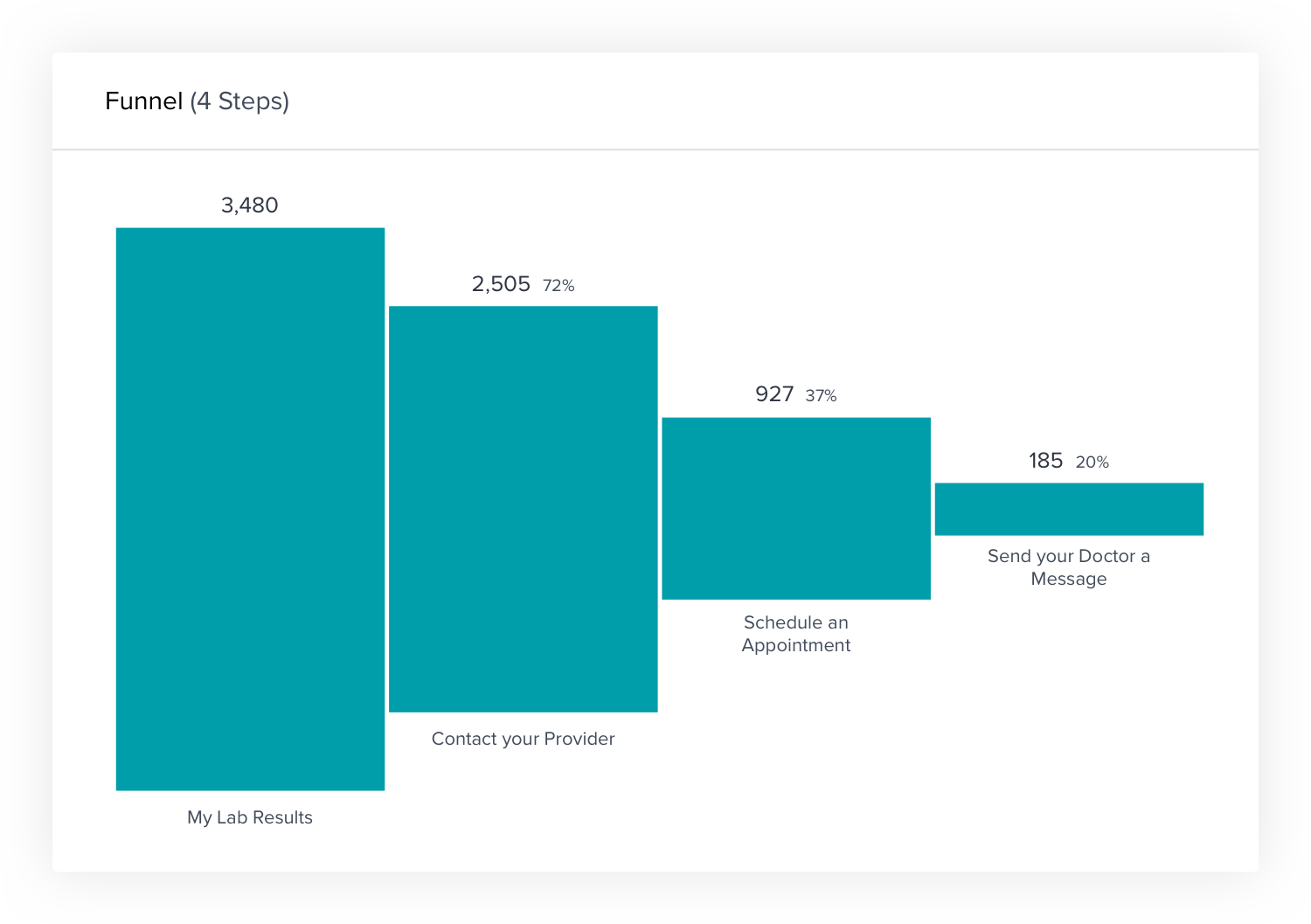
Using Pendo analytics, the product team at LabCorp noticed that users were dropping out of the new user registration process on its patient portal. There were two key reasons: Adding an extra space at the end of a name was throwing up an error message, and a third-party authentication tool was taking too long to load. The team shared that information with their development teams and the third-party partner to resolve the issues and support tickets dropped by 99%.
On any given visit to a practice or hospital, a patient might interact with a half dozen or more different healthcare workers. There’s the doctor and nurse team that provides the care, of course, and the back office team that handles billing and coding. And sometimes, even a pharmacist who dispenses medication. As a result, most healthcare platforms have multiple personas who use the software in different ways.
Pendo offers the ability to segment users based on their roles. That means you can understand usage of particular features by segment, then develop strategies to support those groups of users in-app and lead them to success.
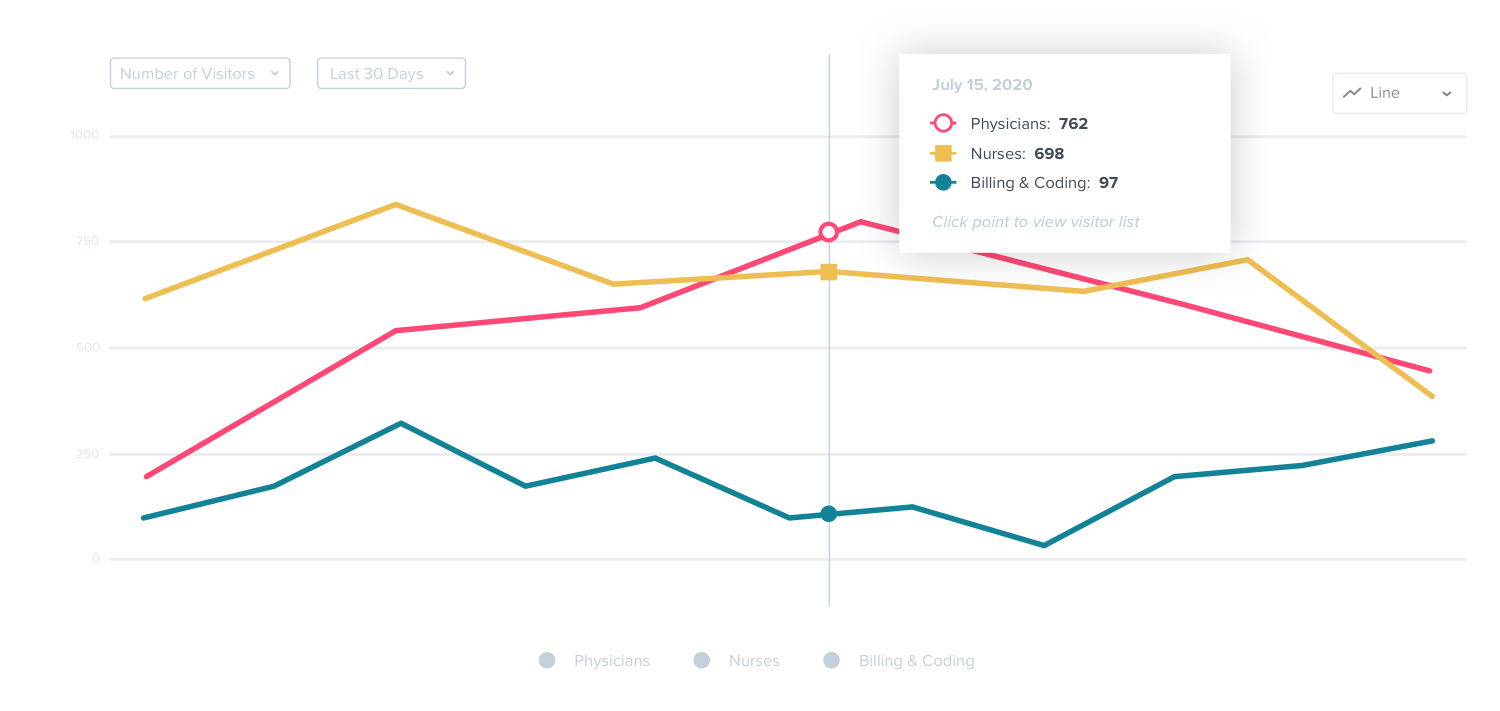
You can also deliver guides or NPS surveys to a specific role, rather than broadcasting those messages across the entire platform.
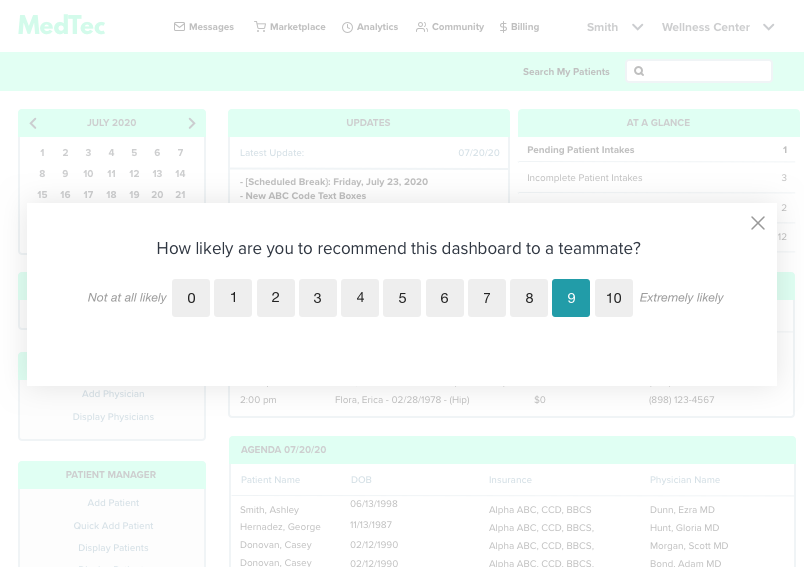
Henry Schein, for example, split their NPS survey results into two groups: dentists and technicians. They noticed distinct differences in how those groups used the platform and deployed separate development teams to build functionality that would be useful and relevant to each persona. The company’s NPS went up by 43 points in the six months after changes were made.
2. Onboard and train patients and providers
Healthcare is a complex industry involving lots of esoteric terminology, lengthy forms, and dozens of specializations. For patients who may only engage with virtual healthcare solutions two or three times per year or providers who are using one for the first time, this can all lead to frustration and the perception of hard-to-use software. That’s a situation that can drive up support tickets or cause users to quit your product altogether. And, COVID-19 has led to a spike in first-time users of telehealth software and other healthcare technologies. That’s the case for both patients and providers.
Pendo can help solve this problem from beginning to end. Pendo analytics can reveal where or on which fields users are getting confused, and in-app messaging can deliver contextual information to clear up the jargon.
Pendo gives you the ability to set up custom onboarding messages to greet each type of user on their first login and walk them through the platform. Once they’re up and running, use Pendo’s usage data to identify trouble spots and design and deploy tooltips and guides on the spot to help users complete their task. This makes for a seamless experience and reduces the burden on your support teams.
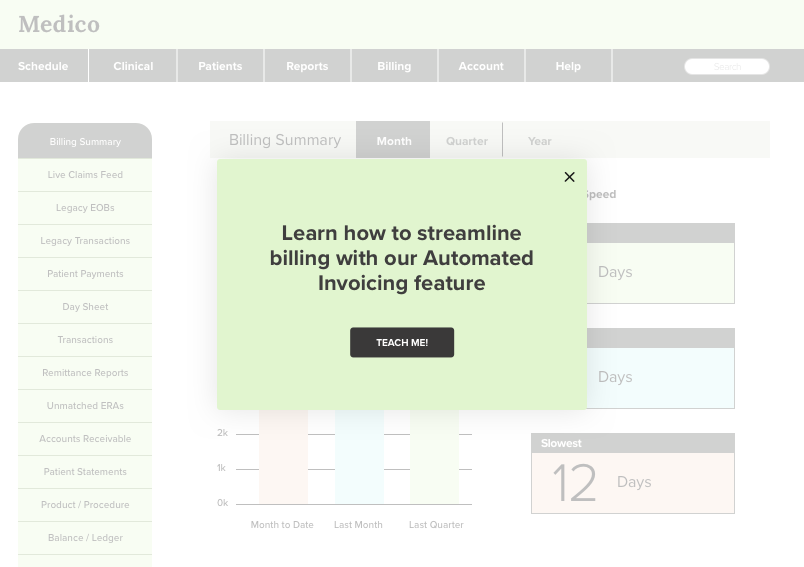
In the early days of COVID-19, K4Connect used Pendo guides to communicate important information about the pandemic to caregivers at long-term care and senior living communities. They also replaced in-person training—now impossible due to tight restrictions on the communities—with in-app walkthroughs. That allowed the company to continue offering high-quality onboarding and training in a completely touchless format.
Healthcare workers are now busier than ever, too. They’re expected to use multiple systems to monitor bed capacity, track a patient’s vital signs, manage appointments, and update health records, and they don’t have time to sit down and read dense user manuals. And let’s face it: No one wants to spend 15 of the 30 minutes they have with their doctor watching them dig through support documentation to figure out how to use an electronic medical record system.
That’s why many health tech companies are moving user education and training inside their applications using Pendo in-app guides and Pendo’s knowledge base integrations.
After using Pendo data to identify friction points and roadblocks, you can use in-app messaging to deliver targeted information or support to get users past them. As users navigate these platforms, guides relevant to the task at hand pop up and provide useful information or short video walkthroughs. And, you can use Pendo’s Resource Center as a way to provide additional, on-demand, and in context support in your app, from articles to release notes to in-app guides.
All this allows users to quickly find the answers they need to get a job done without having to navigate away from the task they’re working on.
3. Engage your users and drive product awareness
Pendo is also a powerful tool for drawing awareness to new features or offers, helping to increase usage and adoption of your platform. Pendo’s in-app messaging capabilities can help spread the word about your new or existing telehealth offerings to ensure doctors can stay in touch with patients and keep an eye on their vitals while practices are closed during the pandemic. This means providers can offer their patients the same quality of care, from a safe distance.
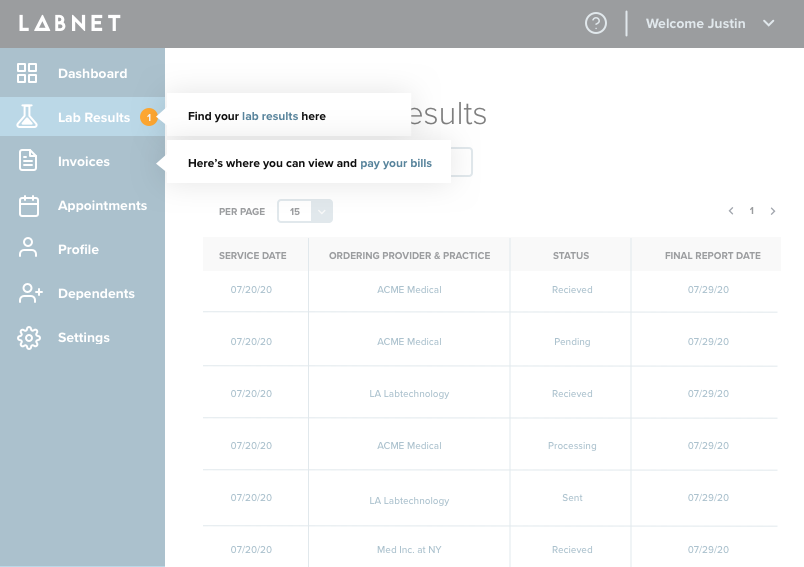
WebPT, a Pendo customer in the physical therapy industry, did just this, using tooltips to guide patients through sprawling insurance forms. That decreased support tickets related to those forms by 50%. And when WebPT rolls out new features, they use Pendo guides to announce them and to collect feedback on what users think of the added functionality. Response rates to those surveys were four times as high as email surveys, and feature adoption rose 25 to 50%.
As you smooth out friction points and lead users to value, you can watch customer satisfaction levels rise by collecting NPS.
4. Prioritize product development and new features
The best way to make sure your product is meeting users’ expectations is to hear from them directly about their biggest needs. Pendo Feedback makes it simple and efficient to collect, organize, prioritize and make product decisions from user feedback.
With Pendo Feedback, the providers who know best what functionality they need to provide top-quality patient care can submit feature requests, then get back to doing what they do best: treating patients.
Requesters can vote on feature requests submitted by others, helping you single out the most requested and highest value projects to prioritize on your roadmap. Then, make that roadmap public, so that users who submitted feature requests aren’t left wondering if they were received or being worked on.
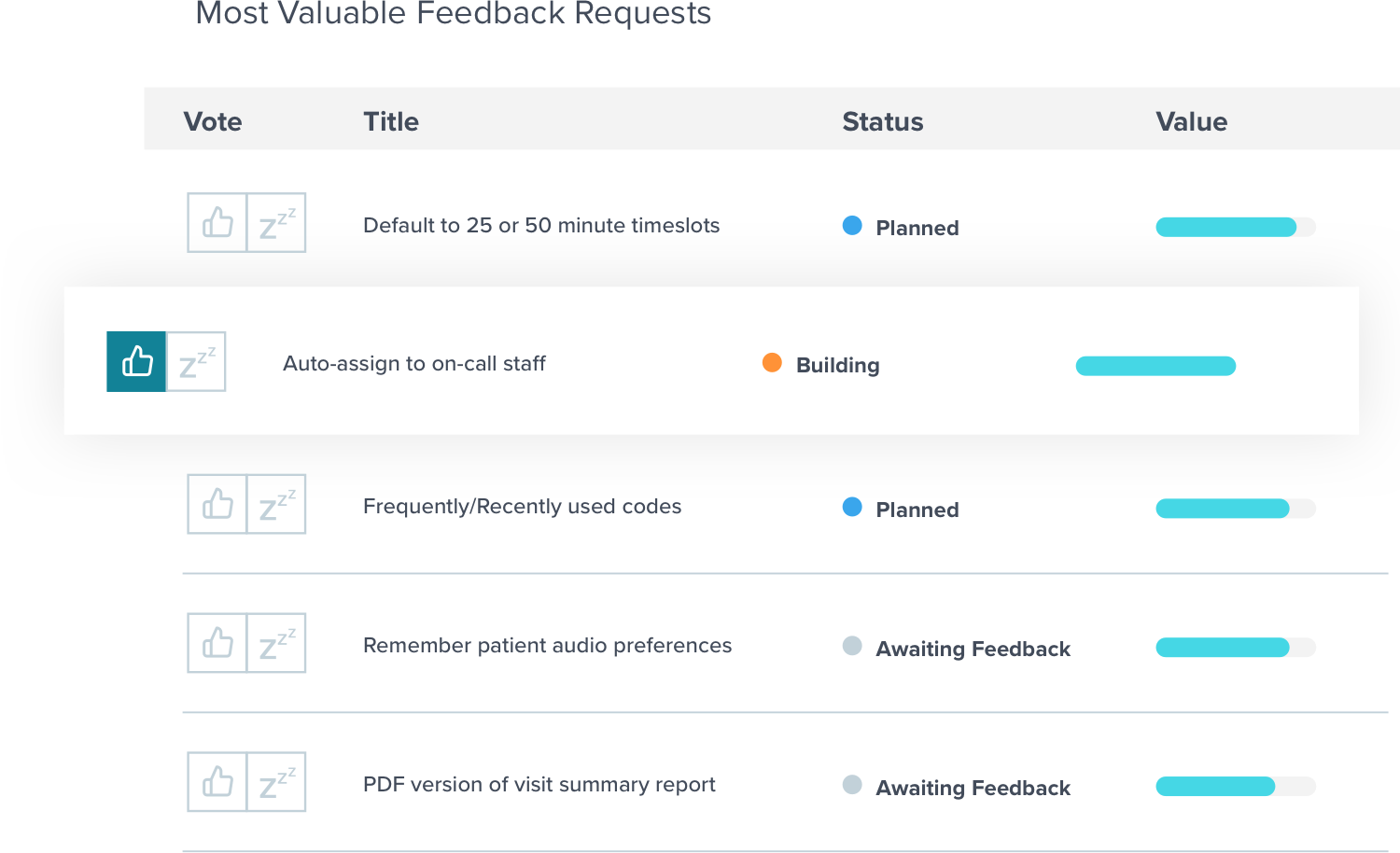
Magnus Health, a company operating at the intersection of healthcare and education, used Pendo Feedback to completely revolutionize their roadmapping process. Gone were the days of spending hours in meetings poring over spreadsheets to prioritize requests—users simply ranked wants by voting them up. And, some of the feature requests that came in signaled functionality that competitors had, helping the Magnus team build more competitive offerings.
5. Deep insights, full regulatory compliance
Patient privacy is a top concern in the health care industry, as any provider and vendor must comply with the Health Insurance Portability and Accountability Act and other federal privacy rules.
It’s top of mind at Pendo, too. With Pendo’s SOC 2 Type 2 compliance covering all five Trust Services Principles, you can rest assured that your users’ personally identifiable information will remain secure. All data hosted by Pendo is encrypted, and the only identifying information that it requires is a unique user ID for your end users. You can choose to send other information about your users to support segmentation and guide targeting, and Pendo has procedures in place to safeguard that information, to safeguard patient information, including signing a BAA, at the customer’s request.


